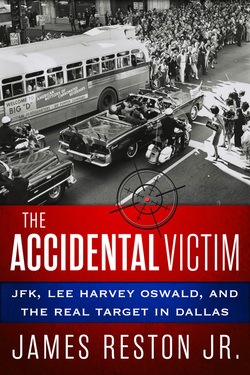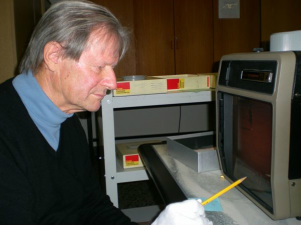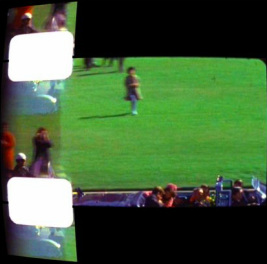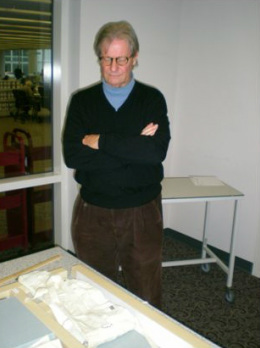The Accidental Victim
""The Accidental Victim" tells the tale of Dallas from an entirely different angle. Told in an elegant, novelistic voice, Reston brings the exhilarating early 1960s to life... After 50 years his new version fits the facts with a convincing match." --US News and World Report

The fiftieth anniversary of the Dallas assassination of President John F. Kennedy is sure to be marked with great attention, as it deserves to be. One needs only to look at the pictures of the presidential motorcade on November 22, 1963, (above middle) as it passed through the narrow streets of downtown Dallas and see the spectators reach out and nearly touch the president in his open convertible, to marvel at how the world has changed. The terrible event is one of those times, like most recently the events of 9/11, during which anyone who was alive and conscious remembers with great vividness where they were and what they were doing. Back then I was a young 22 year old research assistant (and later speech writer) for Kennedy’s Secretary of the Interior, Steward Udall. Udall was gone that day, flying to Japan on a trade mission with other Cabinet members. When the news came, we huddled around the television to the secretary’s back room, listening to Walter Cronkite deliver the news, in utter disbelief and horror.
Over these five decades, a warehouse of books and articles and videos has been created about the murder and the Commission that investigated it. Only recently has the National Archives digitized the assassination records, making them far more accessible. One would think that “history” has come to a definite consensus. How far from the case that is! Was there one assassin or several? Was a foreign government behind the deed, or some gangster group? It has even been suggested that Lyndon Johnson, Kennedy’s successor, was somehow involved, or the CIA or the FBI. The theories and conjectures abound. And the farther we get from the event, the more truth seems to elude us. A recent poll of Americans found that 82% of Americans now believe there was a conspiracy, even though not a shred of convincing evidence has been put forward to support that notion.
My new book, The Accidental Victim: JFK, Lee Harvey Oswald, and the Real Target in Dallas, (book cover at left,to be published September 9 by Zola Books) is profoundly, unabashedly anti-conspiracy. The evidence is overwhelming that Lee Harvey Oswald acted alone, with absolutely no encouragement from, or involvement with, a foreign government or a criminal organization. But the matter does not end there. Why would this wretched little man with a 9th grade education and a demonstrable admiration for President Kennedy pick up a rifle and set out on such a dastardly mission that day?
James Reston Jr. makes an intriguing argument for a psychological rather than a political motive for Oswald's actions. In Reston’s paradigm challenging version of events, the death of JFK resulted from collateral damage associated with the unsuccessful attempt to kill Governor John Connally, the man Oswald believed had betrayed him.
--Richard M. Restak, M.D.
I could never accept the explanation of the august Warren Commission: that this insignificant, little man was possessed and obsessed with grandiose notions, and, as a convinced Marxist, he hoped to bring down the U.S. government by decapitating its head. Men with Oswald’s hard-scrabble background and education are rarely driven to terrible acts by such vaulted notions. But even if they were, intellectual ideas like that do not motivate one to kill, unless they are professionals. (This was not the case with Oswald.) There had to be something deeply emotional in his makeup and visceral in his instincts that engaged his rage, a rage so great that it became a murderous rage.
This book sets out to find that source. It is a substantial elaboration and sharpening of my historical argument about the assassination that began with a cover story in Time Magazine on the twenty-fifth anniversary of Dallas, November 28, 1988, and proceeded with my treatment of the event in my biography of the Texas governor, John Connally entitled The Lone Star, published the following year, in 1989. In a Los Angeles Times op-ed piece on November 22, 2005, I first put forward my contention about the importance of JFK’s corset in the critical seconds along Elm Street in Dealey Plaza.
I believe that John Connally, not John F. Kennedy, was Oswald’s primary target in Dallas. The President of the United States was an accidental victim.
Sometimes attacking a great and significant historical event from an oblique angle can lead to astonishing surprises. That was my experience here.
Over these five decades, a warehouse of books and articles and videos has been created about the murder and the Commission that investigated it. Only recently has the National Archives digitized the assassination records, making them far more accessible. One would think that “history” has come to a definite consensus. How far from the case that is! Was there one assassin or several? Was a foreign government behind the deed, or some gangster group? It has even been suggested that Lyndon Johnson, Kennedy’s successor, was somehow involved, or the CIA or the FBI. The theories and conjectures abound. And the farther we get from the event, the more truth seems to elude us. A recent poll of Americans found that 82% of Americans now believe there was a conspiracy, even though not a shred of convincing evidence has been put forward to support that notion.
My new book, The Accidental Victim: JFK, Lee Harvey Oswald, and the Real Target in Dallas, (book cover at left,to be published September 9 by Zola Books) is profoundly, unabashedly anti-conspiracy. The evidence is overwhelming that Lee Harvey Oswald acted alone, with absolutely no encouragement from, or involvement with, a foreign government or a criminal organization. But the matter does not end there. Why would this wretched little man with a 9th grade education and a demonstrable admiration for President Kennedy pick up a rifle and set out on such a dastardly mission that day?
James Reston Jr. makes an intriguing argument for a psychological rather than a political motive for Oswald's actions. In Reston’s paradigm challenging version of events, the death of JFK resulted from collateral damage associated with the unsuccessful attempt to kill Governor John Connally, the man Oswald believed had betrayed him.
--Richard M. Restak, M.D.
I could never accept the explanation of the august Warren Commission: that this insignificant, little man was possessed and obsessed with grandiose notions, and, as a convinced Marxist, he hoped to bring down the U.S. government by decapitating its head. Men with Oswald’s hard-scrabble background and education are rarely driven to terrible acts by such vaulted notions. But even if they were, intellectual ideas like that do not motivate one to kill, unless they are professionals. (This was not the case with Oswald.) There had to be something deeply emotional in his makeup and visceral in his instincts that engaged his rage, a rage so great that it became a murderous rage.
This book sets out to find that source. It is a substantial elaboration and sharpening of my historical argument about the assassination that began with a cover story in Time Magazine on the twenty-fifth anniversary of Dallas, November 28, 1988, and proceeded with my treatment of the event in my biography of the Texas governor, John Connally entitled The Lone Star, published the following year, in 1989. In a Los Angeles Times op-ed piece on November 22, 2005, I first put forward my contention about the importance of JFK’s corset in the critical seconds along Elm Street in Dealey Plaza.
I believe that John Connally, not John F. Kennedy, was Oswald’s primary target in Dallas. The President of the United States was an accidental victim.
Sometimes attacking a great and significant historical event from an oblique angle can lead to astonishing surprises. That was my experience here.
In the News and on Social Media
"Interview on Reddit"
Appeared on Reddit.com September 2013 View Site
"JFK: An Accidental Assassination?"
Appeared on usnews.com November, 2013 View PDF
"A Killer's Last Steps"
Appeared on Slate.com November, 2013 View PDF
"Correcting JFK mythology on his death: Column"
Appeared in USA Today November, 2013 View PDF
Appeared on Reddit.com September 2013 View Site
"JFK: An Accidental Assassination?"
Appeared on usnews.com November, 2013 View PDF
"A Killer's Last Steps"
Appeared on Slate.com November, 2013 View PDF
"Correcting JFK mythology on his death: Column"
Appeared in USA Today November, 2013 View PDF
To read articles written about the assassination in Dallas by James Reston, Jr. see the Obsession Page.


